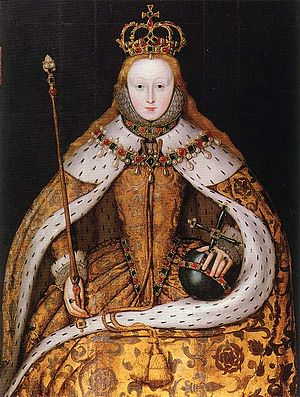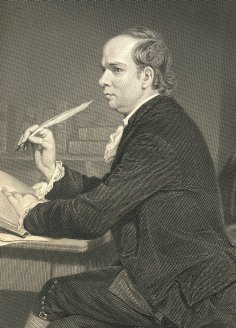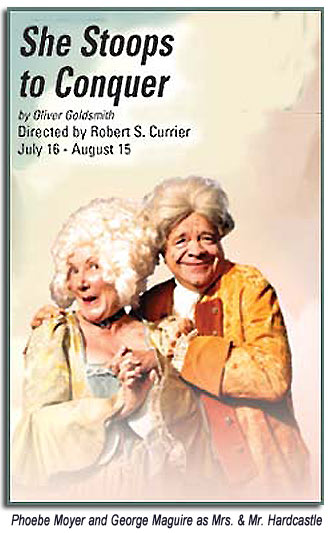I recently got the movie Starter for Ten from Netflix. I’m not sure how I missed it before, considering a) it stars the adorable James McAvoy, and b) it’s a British rom-com about, of all things, Academic Team! Well, the British version of AT called University Challenge. I, being a Geek And Proud Of It, was on Academic Team in high school, though I never met anyone like McAvoy at tournaments. Where else could I utilize my basically totally useless knowledge of 19th century British novels, Russian ballet, Olympic figure skating, and Elizabethan poetry??? (Though I was totally no good at almost any kind of science, as well as, oh, the rules of cricket, or the history of Germany. All those duchies, very confusing!). This is also how I know that November 17th was a Very Important holiday in the England of the late 16th century. It was Elizabeth I’s Ascension Day.
Queen Mary died at St. James’s Palace early on the morning of November 17, 1558, and members of the Privy Council immediately set out for Elizabeth’s residence at Hatfield House (where she was practically under house arrest) to tell her the news. They carried Mary’s betrothal ring from Phillip of Spain, to prove to Elizabeth that the queen was dead, so long live the queen. The legend is that they found her sitting under a tree, reading a Bible in Greek. On hearing the news, she proclaimed, “It is the Lord’s doing, and it is marvelous in our eyes.” (Now, I am not at all sure someone would just “happen” to be sitting under a tree reading in November! Maybe she was just out for a stroll, maybe the story is apocryphal, or maybe she heard they were coming and stage-managed the whole thing. She was one of the great stage managers in history). On a side note, the original tree is no longer there, but one was planted in its place by Elizabeth II in 1985. On another side note, when Elizabeth I died in 1603, after a reign of 45 years, she was buried with Mary in Westminster Abbey. The inscription reads, “Partners both in throne and grave, here rest we two sisters, Elizabeth and Mary, in the hope of one resurrection.” Kind of ironic, but I admit I got a little emotional when I saw the tomb (or maybe it was jet lag?)
Anyway, thereafter November 17 was a Big Party at court, and around the country. The big event was always a tournament, with a joust and sports where all the men vying for the queen’s attention could show off. Pomp and chivalry were paramount–all the men carried banners and shields adorned with symbolic images of the queen and their devotion to her. (Jousts, of course, were not all Renaissance faire-ish fun–Henri II of France died in one, and there were always injuries at Ascension Day tournies. No fatalities that I could find, though).
The jousts would be followed by a banquet and ball, maybe a play or tableau celebrating the glorious reign of Elizabeth. At one banquet, the court polished off an ox, 40 sheep, 12 pigs, 132 capons, 5 swans, several pheasants, partridges, herons, pigeons, peacocks, and calves, not to mention fish, chicken, barrels of wine, vegetables and eggs, and sweets. Subtleties made of sugar and almond paste, shaped into castles and other fanciful things, were great favorites on such occasions.
Some of the best-known Elizabethan dances were: pavanes (a stately processional), usually followed by a lively galliard. There were gavottes (a circle dance to a medium tempo), sophisticated courantes and sarabands from France, and almains. The Volte was one of the of only dances that allowed couples to closely embrace (the man showed off his strength by lifting the woman high in the air–this is probably why it’s used so often in movies! See Shakespeare in Love, both Elizabeth movies, and probably various Masterpiece Theaters).
Celebrations were not just held at court. There were bonfires, dances (maybe not pavanes, but bransles and Morris dancers), games, lots of wine and ale, and illuminations all across the country.
So, happy Ascension Day, everyone! We might not celebrate with a Volte and a barrel of wine, but we can toast Good Queen Bess. And look forward to our own bacchanalia–Thanksgiving! I hope you all have a great one. Any big plans? I’m very, very thankful for the Riskies and our friends this year.
Oh, and be sure and join us tomorrow as we welcome our Very First Guest Bloggers! Regina Scott and Marissa Doyle from the blog Nineteenteen will join us, and talk about adventures in writing historical YA. We’re so excited to see them here, and hope to have more guest bloggers in the future.
Make us very thankful by signing up for our monthly newsletter at riskies@yahoo.com! Be forewarned of interviews, guest bloggers, and all the fun holiday surprises coming up…
















